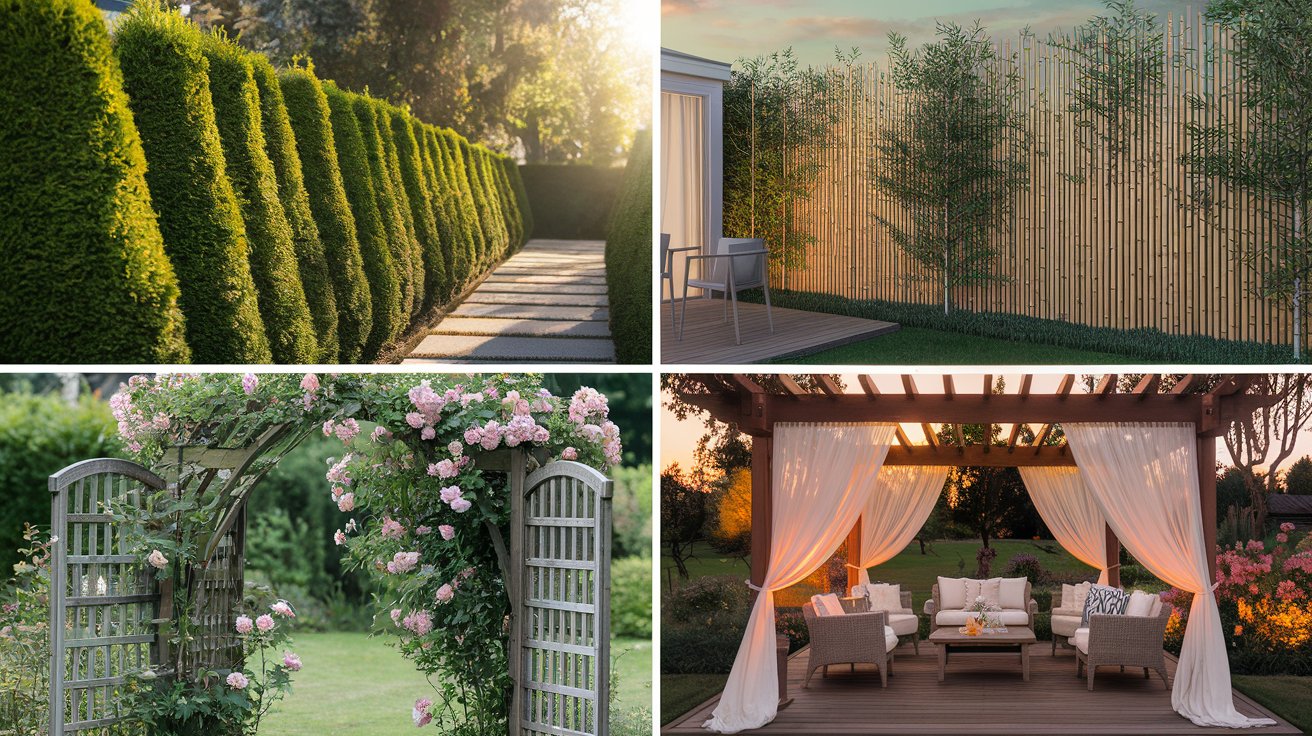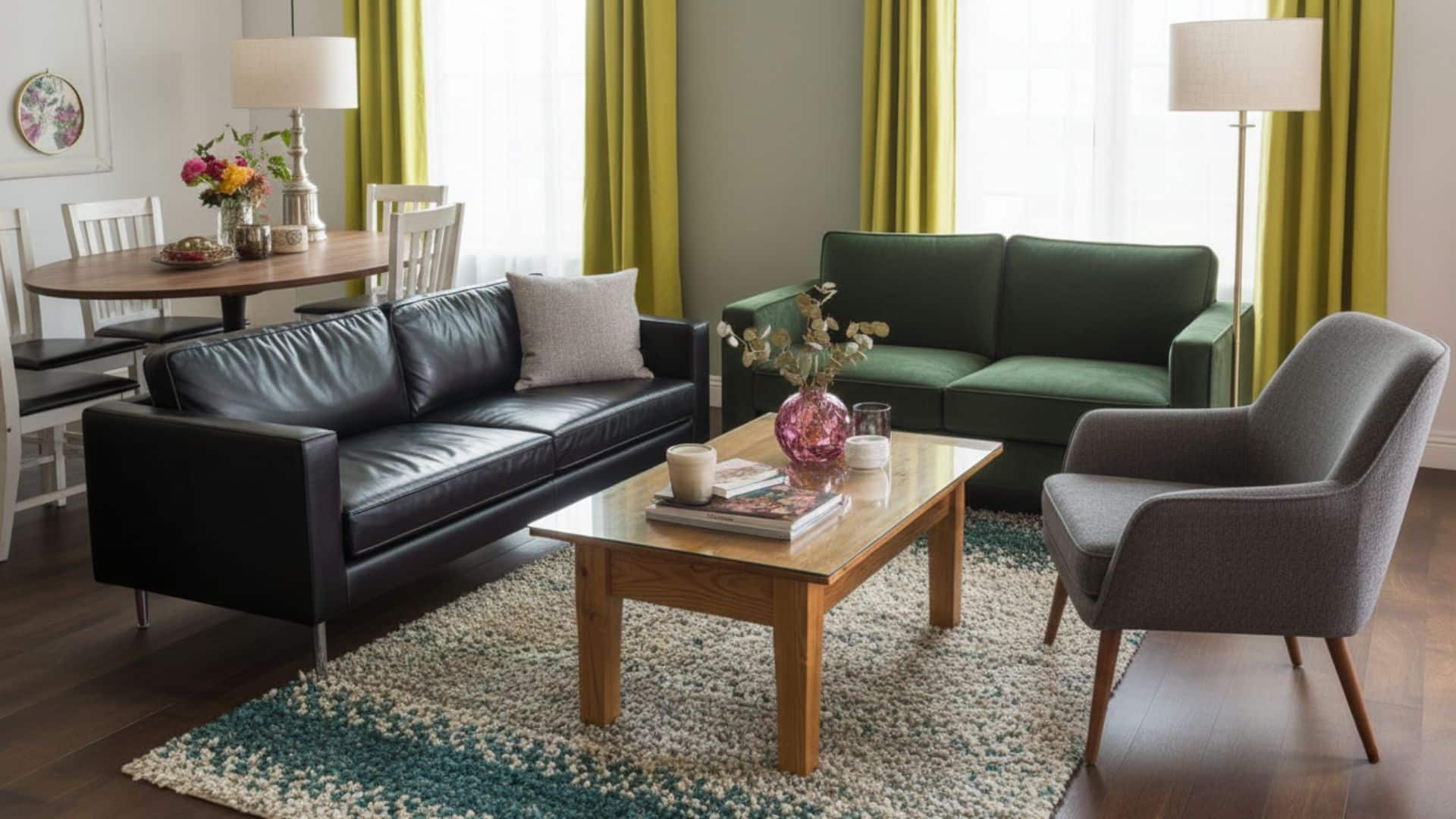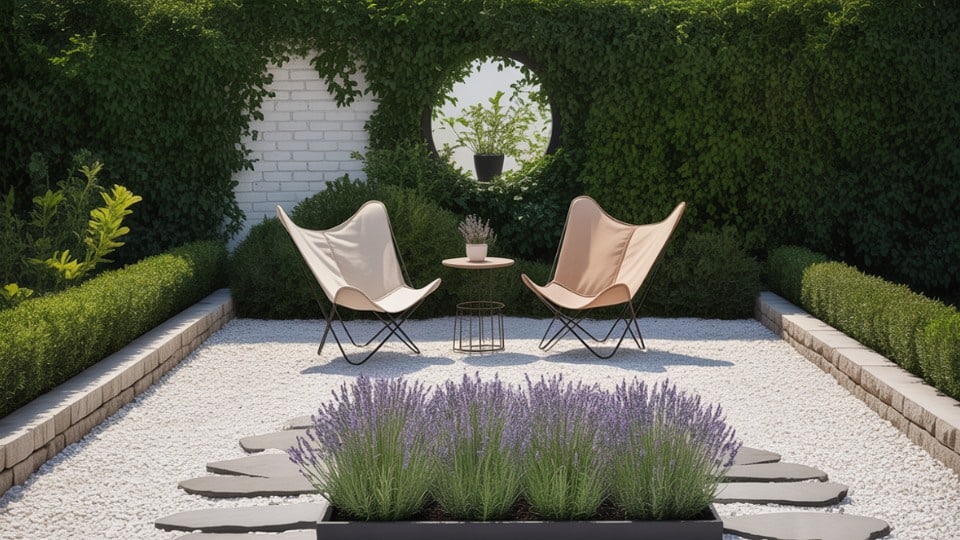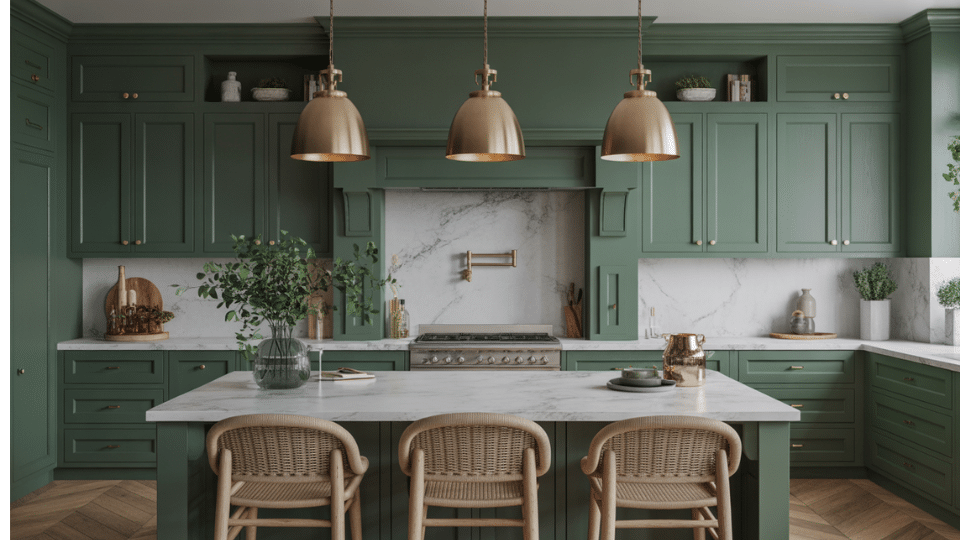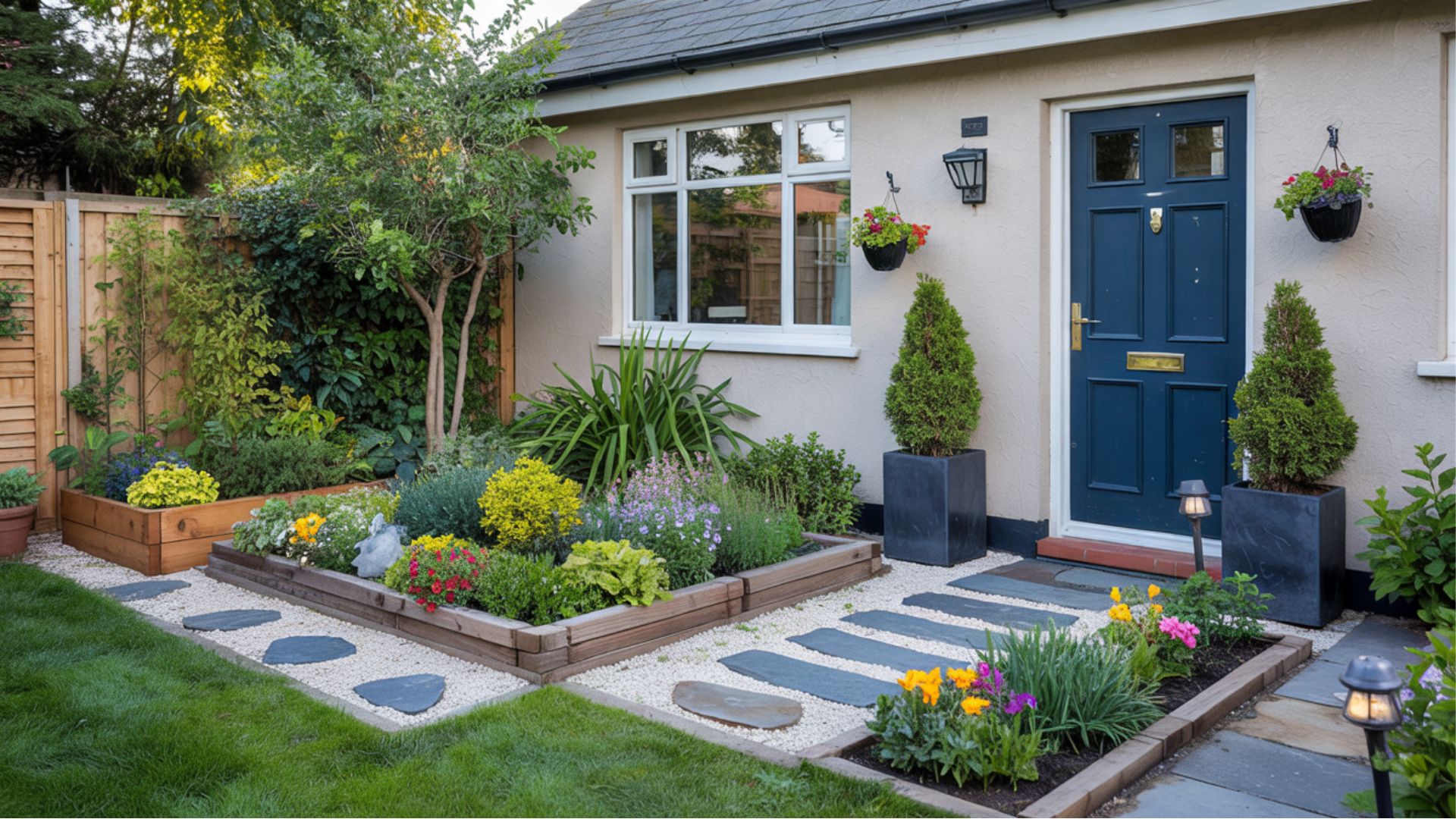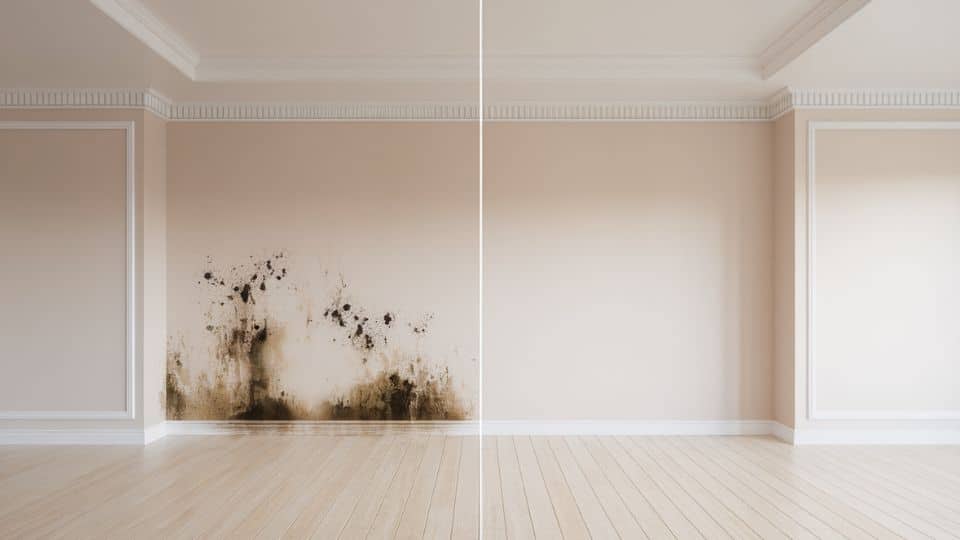Have you ever felt like your garden is more of a fishbowl than a private retreat?
I understand the frustration of trying to enjoy outdoor space while feeling exposed to neighbors or passersby.
Creating privacy without turning your garden into a fortress is one of the biggest challenges homeowners face today.
The best part? You can achieve privacy without compromising the charm of your garden.
From natural solutions to creative DIY projects, there are countless ways to shield your garden while keeping it visually appealing.
In this guide, I’ll walk you through proven privacy ideas that work for any garden size and style.
Plus, I’ll share key factors to consider before you start and tips to maintain your privacy long-term.
How Can You Achieve Privacy without Losing Beauty?
Effective privacy designs go beyond solid barriers; they protect your space while enhancing its style.
Natural elements often work best for this balance. Plants, trees, and shrubs create living barriers that change with seasons, offering privacy while bringing life and color.
Structure and design play equally important roles. The right placement of screens or fences can block specific sightlines without making your garden feel closed in.
Consider mixing different privacy elements for the best results. A combination of tall plants with decorative screens creates layers of interest without monotony.
With thoughtful planning, your privacy features can become standout design elements that elevate your outdoor space.
Key Factors Before Choosing a Privacy Solution
Before selecting any privacy option, consider these essential factors to ensure your choice works perfectly for your space and needs.
• Budget constraints: Set a realistic budget first. Natural options like seeds and small plants cost less upfront but take time to grow. Instant solutions like panels or mature plants require more initial investment.
• Available space: Garden layout plays a significant role; compact plots benefit from height-focused solutions, while open areas allow more expansive privacy features.
• Maintenance requirements: Be honest about your time and energy. Some options need regular trimming, watering, or seasonal care. Others require minimal upkeep once installed.
• Local regulations: Check height restrictions and boundary rules with your local council. Many areas limit fence heights or require permits for certain structures.
• Climate and soil conditions: Choose plants that thrive in your specific environment. Consider sun exposure, rainfall, and soil type to ensure healthy growth.
• Desired privacy level: Decide if you need complete screening or just partial coverage. This affects whether you choose solid barriers or filtered options.
• Timeline expectations: Determine how quickly you need privacy. Instant solutions cost more, while growing options require patience but offer long-term value.
Privacy Solutions for Any Garden Size
Your garden’s shape and layout determine which privacy strategies will work best, from height-maximizing vertical designs to layered, wide-reaching plantings.
Comprehending what works for your specific size helps narrow down options quickly.
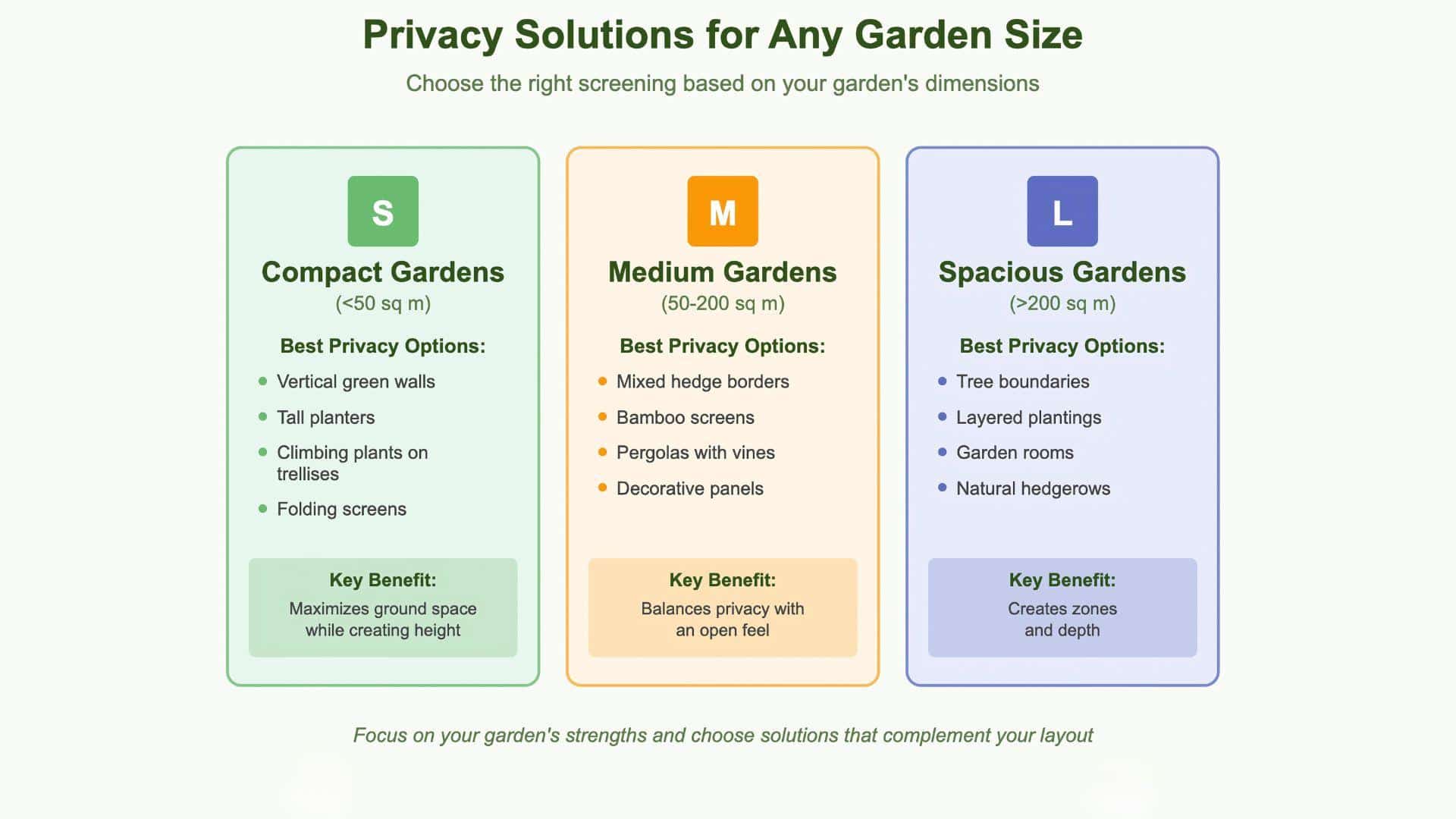
The beauty of modern privacy solutions is their adaptability. Even the smallest back garden ideas can incorporate effective screening without feeling cramped.
19 Creative Garden Privacy Ideas
These versatile privacy solutions range from natural plant barriers to creative DIY projects, each offering unique benefits for different garden styles and spaces.
1. Fast-Growing Evergreen Hedges
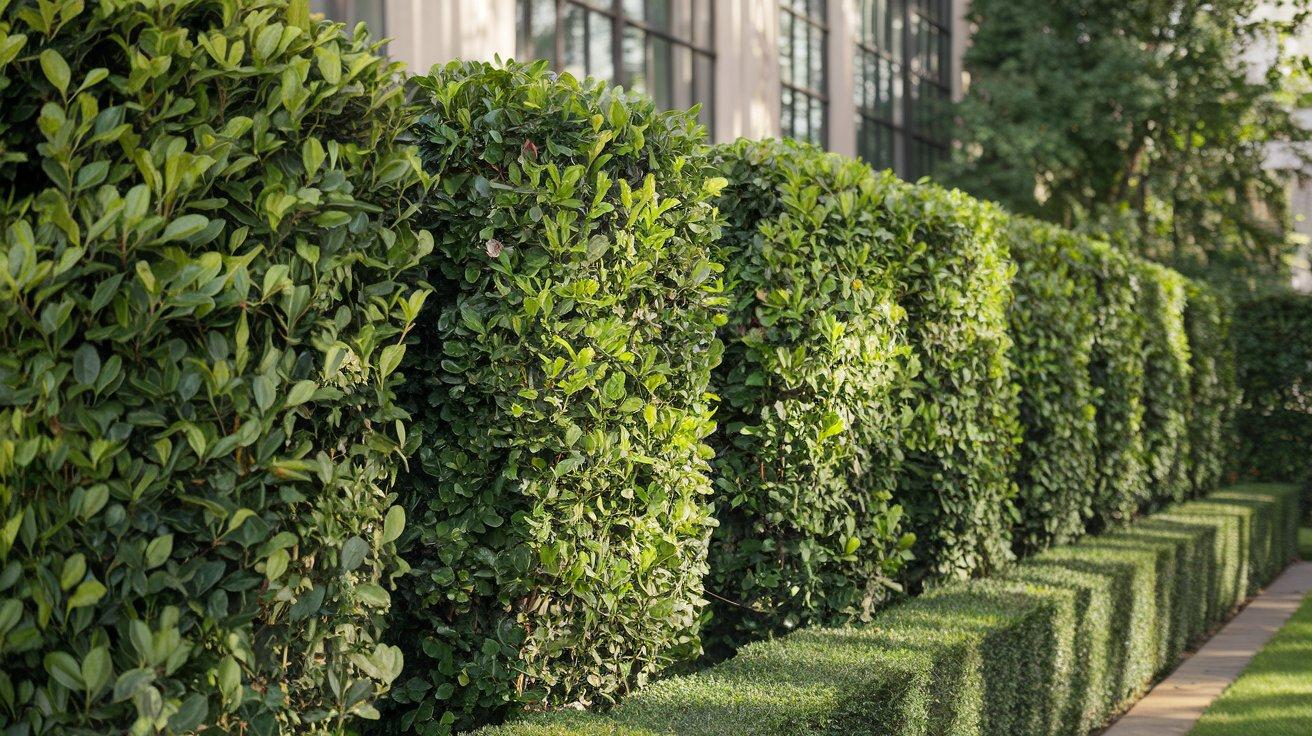
Evergreen hedges provide year-round screening that stays dense and green through all seasons. Popular choices like laurel or privet can grow 2-3 feet annually with proper care.
- Height: Reaches 6-8 feet within 3 years of planting.
- Best for: Traditional gardens needing permanent, formal boundary solutions.
- Maintenance: Trim twice yearly for a neat, controlled appearance.
2. Tall Bamboo Privacy Screen
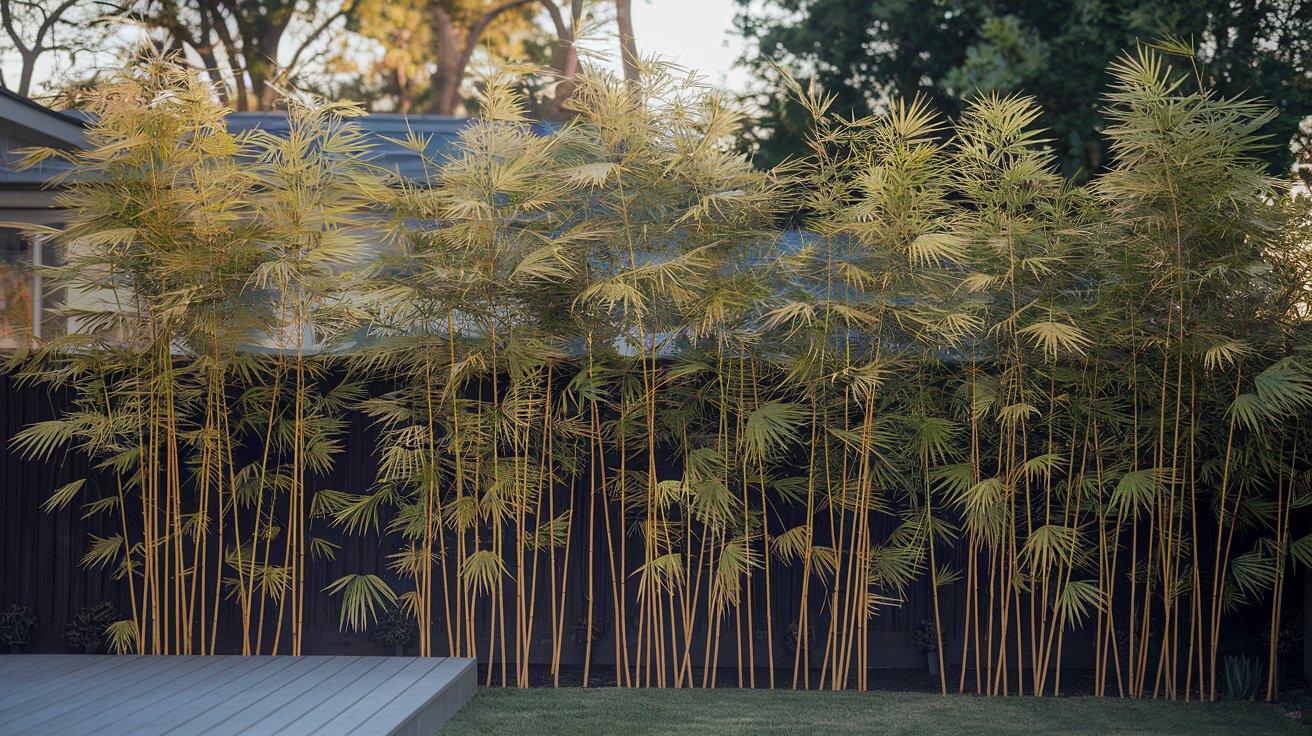
Bamboo creates an instant tropical feel while blocking unwanted views effectively. Choose clumping varieties to prevent spreading into neighboring areas and maintain control.
- Height: Grows 15-30 feet, depending on selected bamboo species.
- Best for: Modern gardens wanting quick coverage and Asian-inspired style.
- Maintenance: Annual thinning keeps growth controlled and healthy-looking.
3. Vertical Living Green Wall
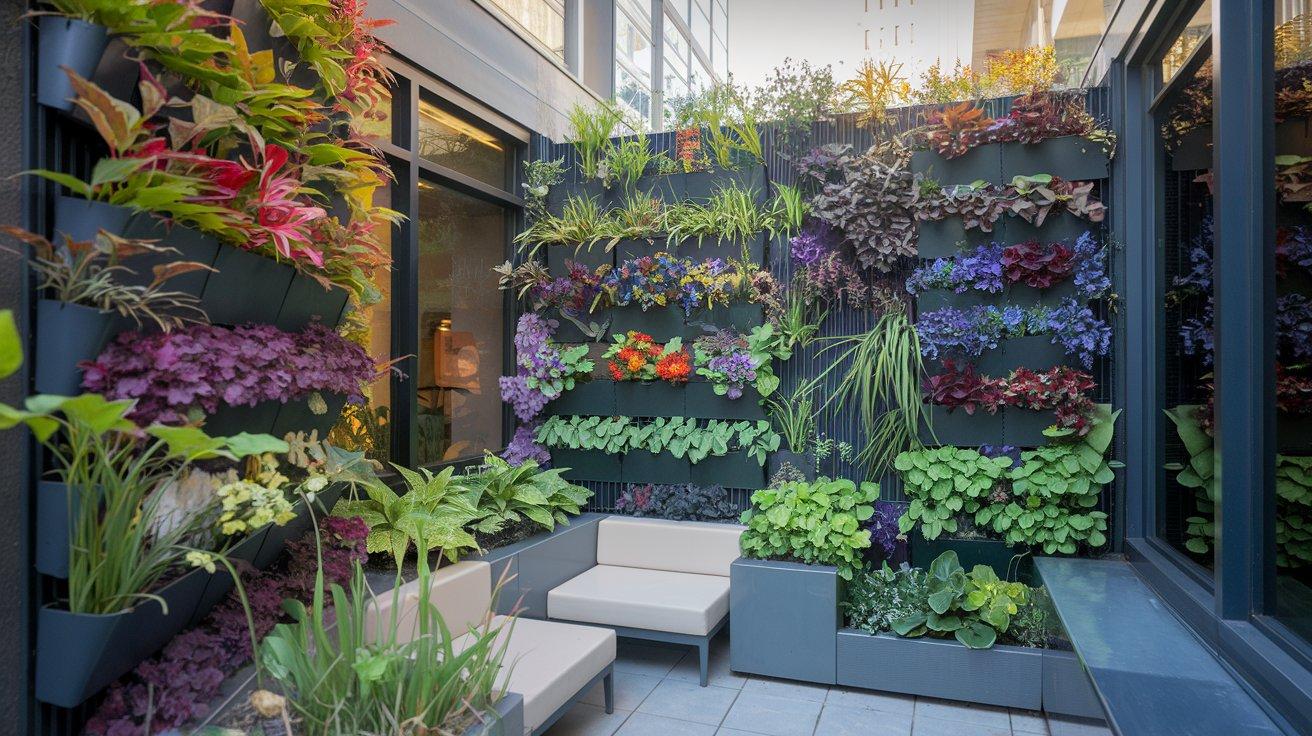
Living walls maximize privacy in minimal space using modular planting systems. They work perfectly for patios, balconies, or narrow side passages where ground space is limited.
- Height: Customizable based on chosen frame size and design.
- Best for: Small urban gardens, courtyards, or tight spaces.
- Maintenance: Weekly watering required with a monthly liquid feeding schedule.
4. Decorative Lattice Wood Fence
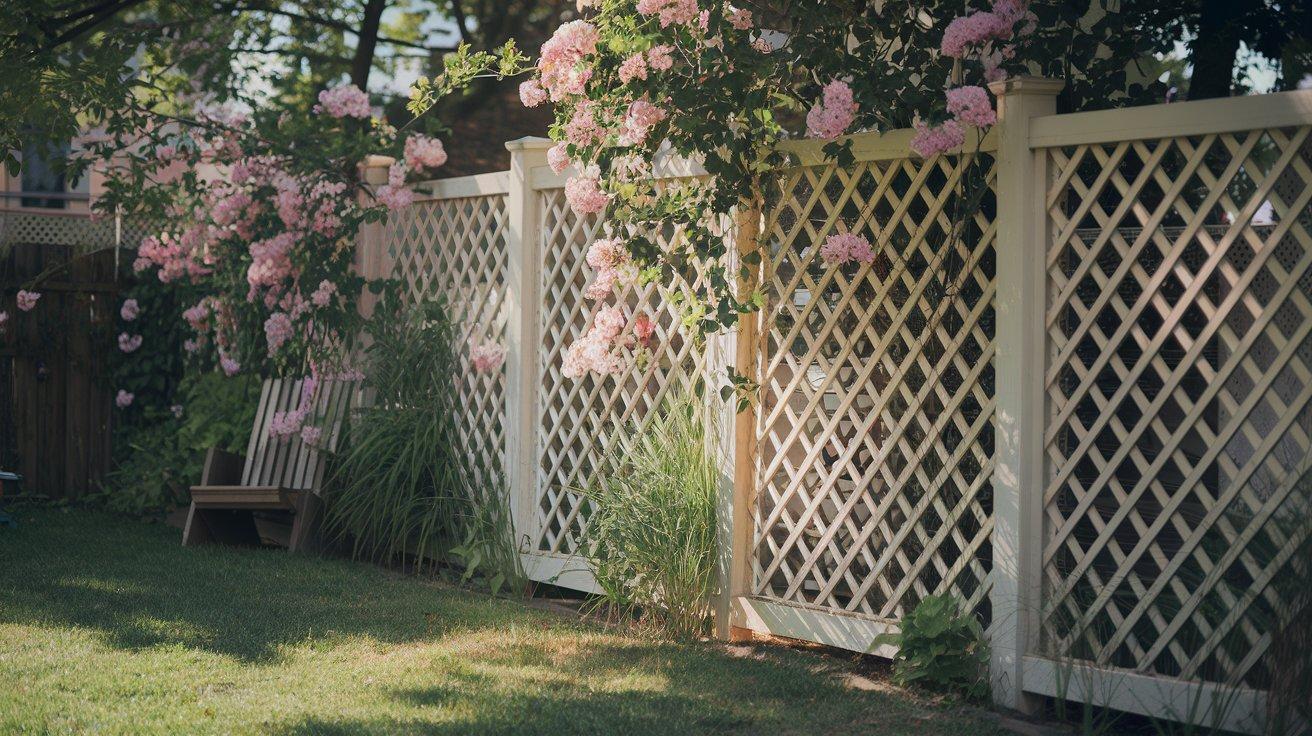
Lattice fencing offers partial screening while allowing light and air flow through diamond patterns. Paint or stain it to match your garden’s color scheme for coordinated style.
- Height: Standard 6-foot panels are widely available at garden centers.
- Best for: Gardens needing filtered privacy without complete blocking.
- Maintenance: Annual treatment prevents weather damage and extends lifespan.
5. Tall Ornamental Grasses Border
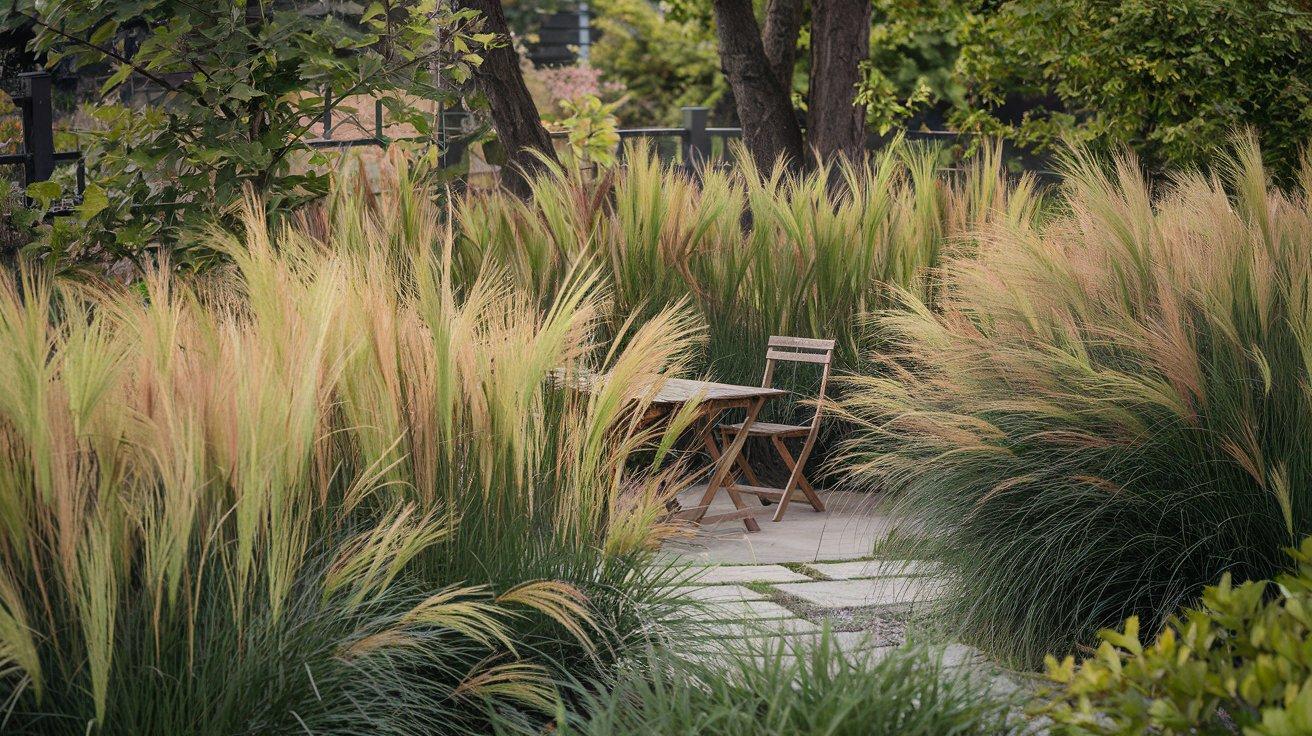
Ornamental grasses sway gracefully while creating natural privacy barriers that move with the breeze. They require minimal care once established and add wonderful texture year-round.
- Height: Most popular varieties reach between 4-6 feet tall.
- Best for: Prairie-style, naturalistic, or low-maintenance garden designs.
- Maintenance: Cut back once yearly in early spring.
6. Outdoor Curtains on A Pergola
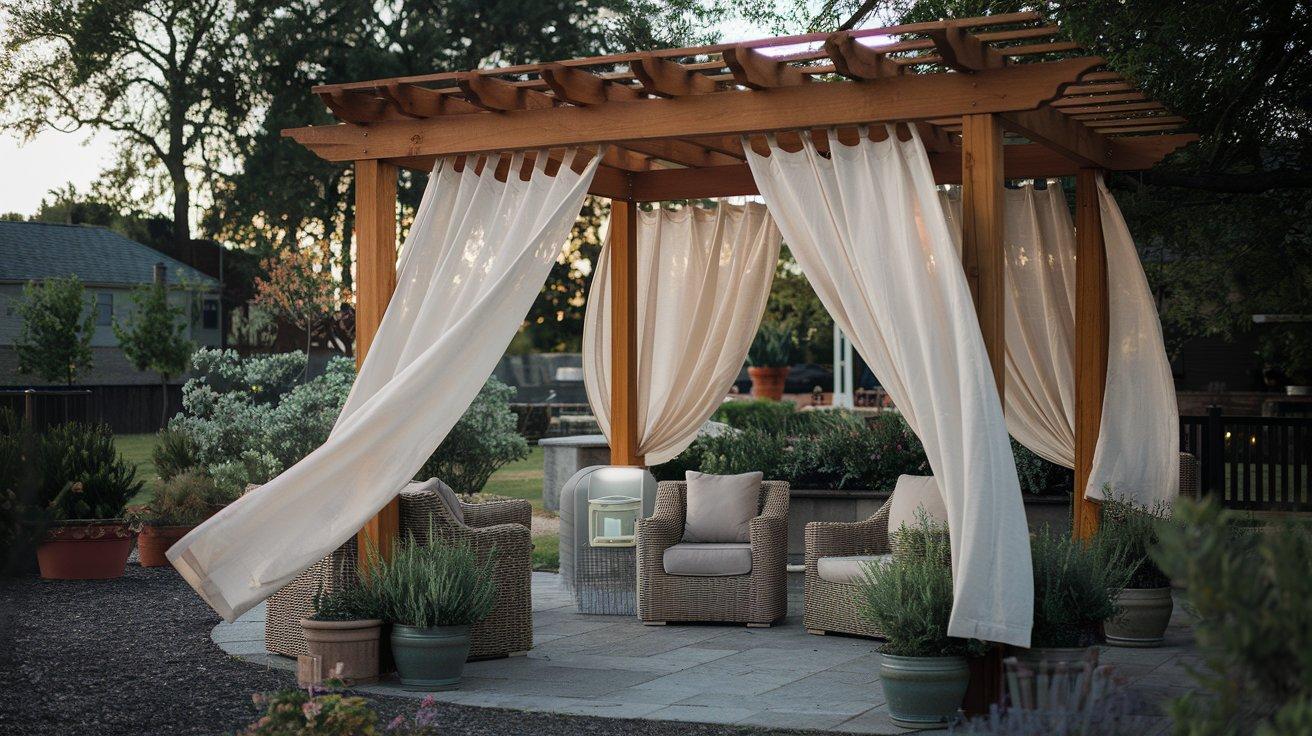
Flowing outdoor drapes add elegance and instant seclusion to pergola spaces. Choose fade-resistant fabrics that withstand sun and rain exposure for lasting beauty.
- Height: Adjustable based on pergola dimensions and personal preference.
- Best for: Outdoor dining areas, patios, and seating zones.
- Maintenance: Machine wash seasonally and store during harsh weather.
7. DIY Pallet Wood Wall
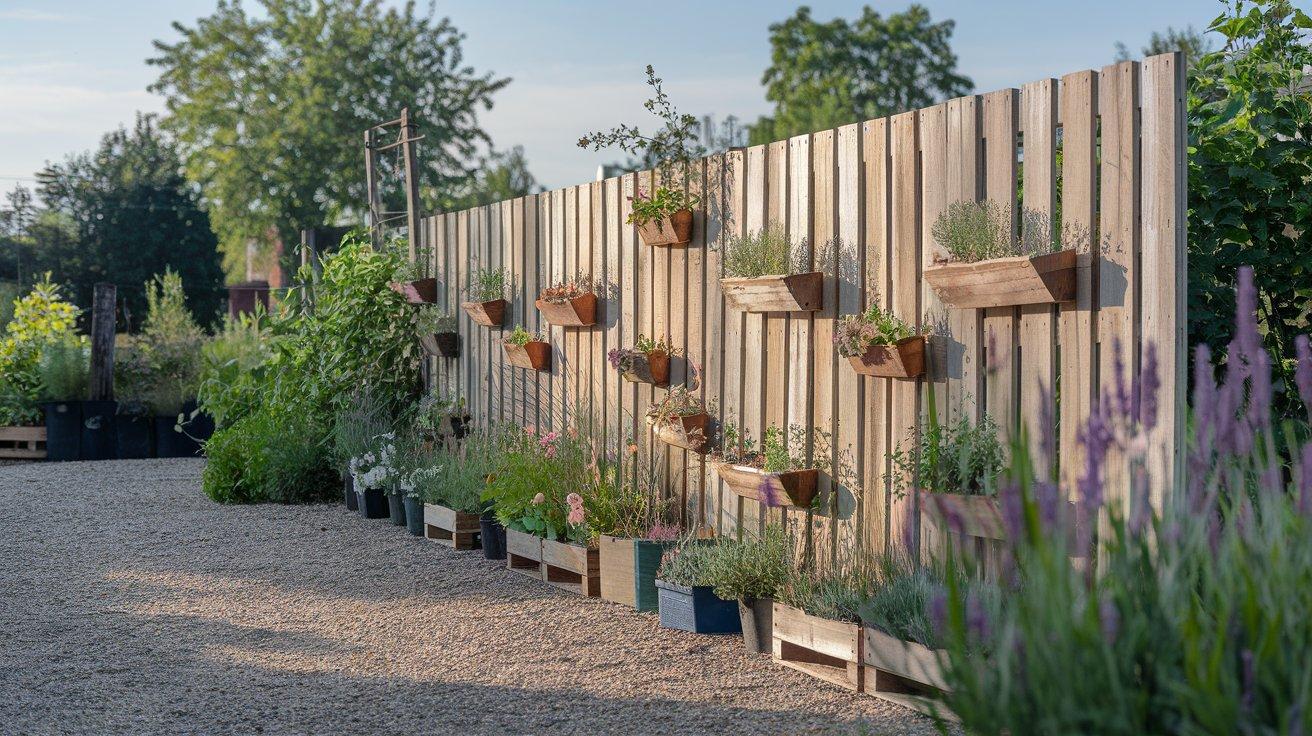
Recycled pallets create rustic privacy screens on tight budgets while reducing waste. Sand and seal them properly for longevity and safety before installation.
- Height: Stack pallets to achieve your desired screening level.
- Best for: Eco-conscious gardens, temporary solutions, or rental properties.
- Maintenance: Reseal every two years to prevent rot.
8. Climbing Roses on A Trellis
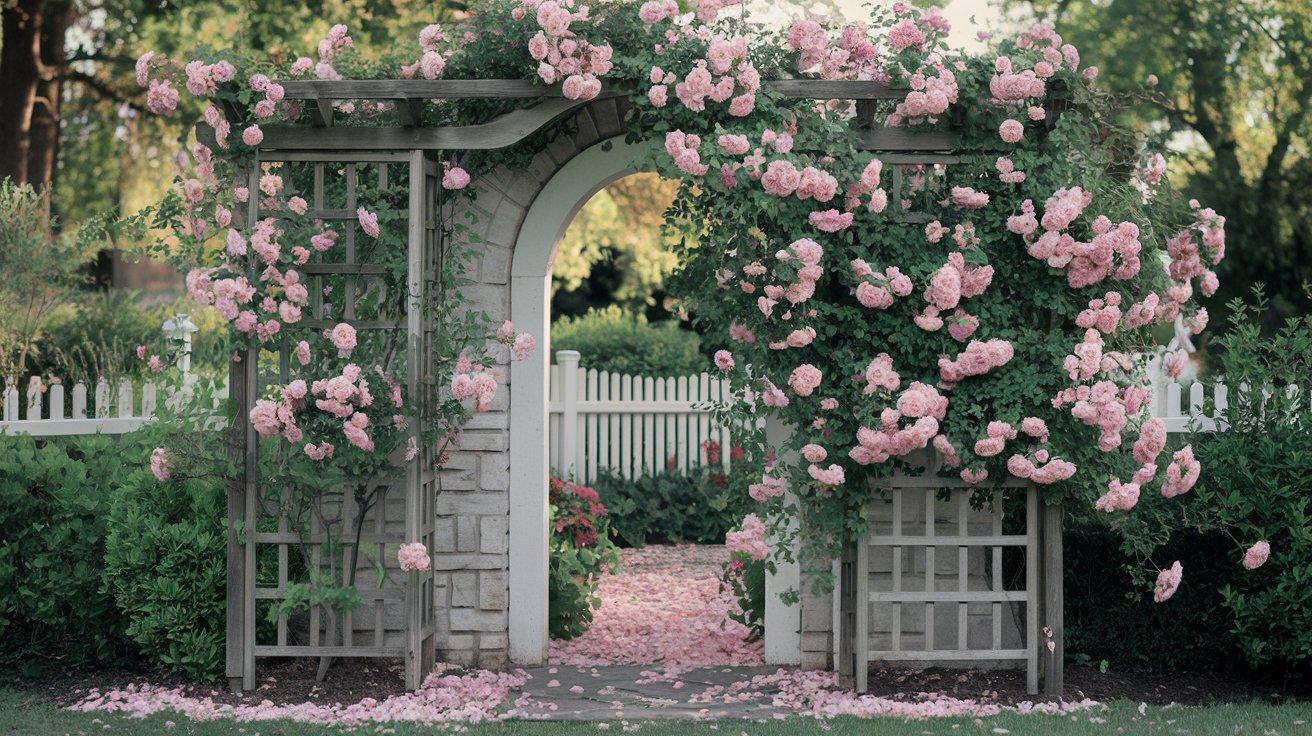
Roses combine beauty with privacy as they mature and spread across support structures. Their thorns also discourage unwanted intrusions while filling gardens with fragrance.
- Height: Climbing varieties typically reach between 10-15 feet high.
- Best for: Cottage gardens and romantic, traditional garden styles.
- Maintenance: Prune after the flowering season for the best blooms.
9. Large Potted Plant Clusters
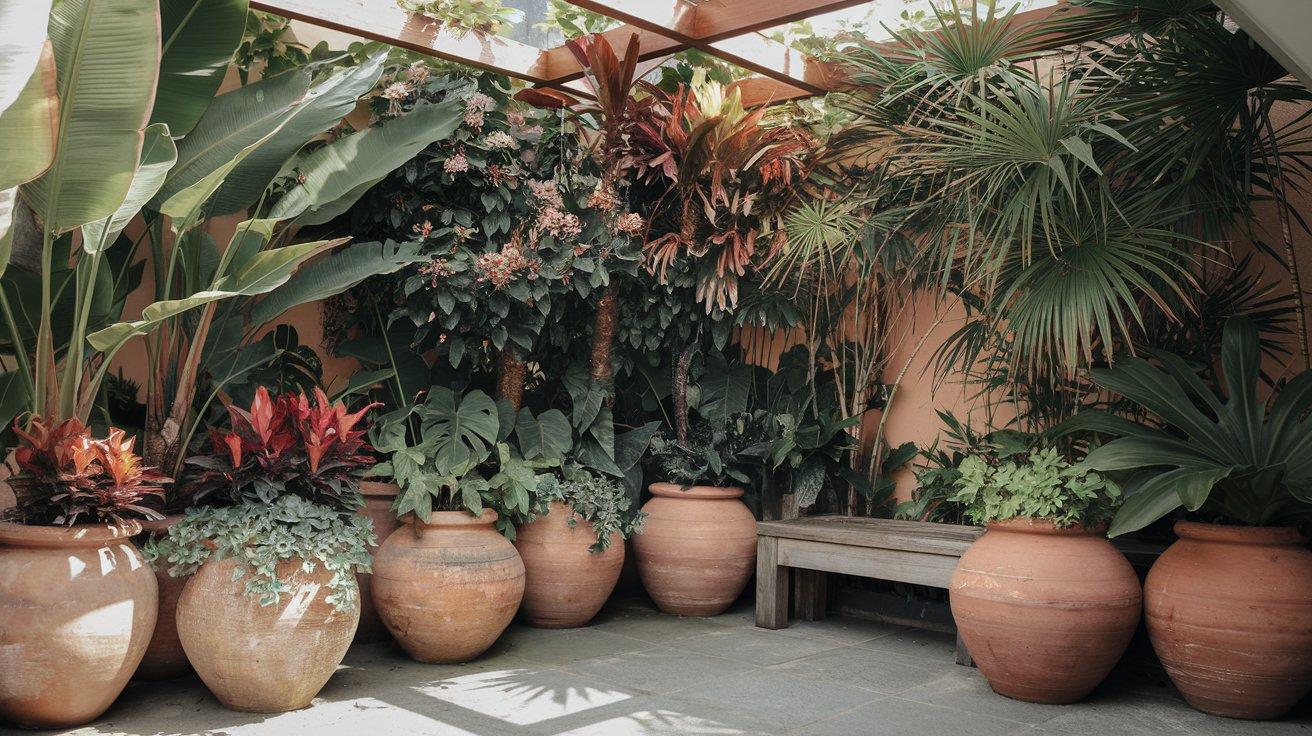
Grouped containers create flexible privacy screens you can rearrange based on seasonal needs. Mix heights and textures for visual interest while maintaining effective coverage.
- Height: Varies based on selected plants and container sizes.
- Best for: Renters or those wanting movable privacy solutions.
- Maintenance: Regular watering is needed, especially during summer months.
10. Outdoor Privacy Screen with Climbing Vines
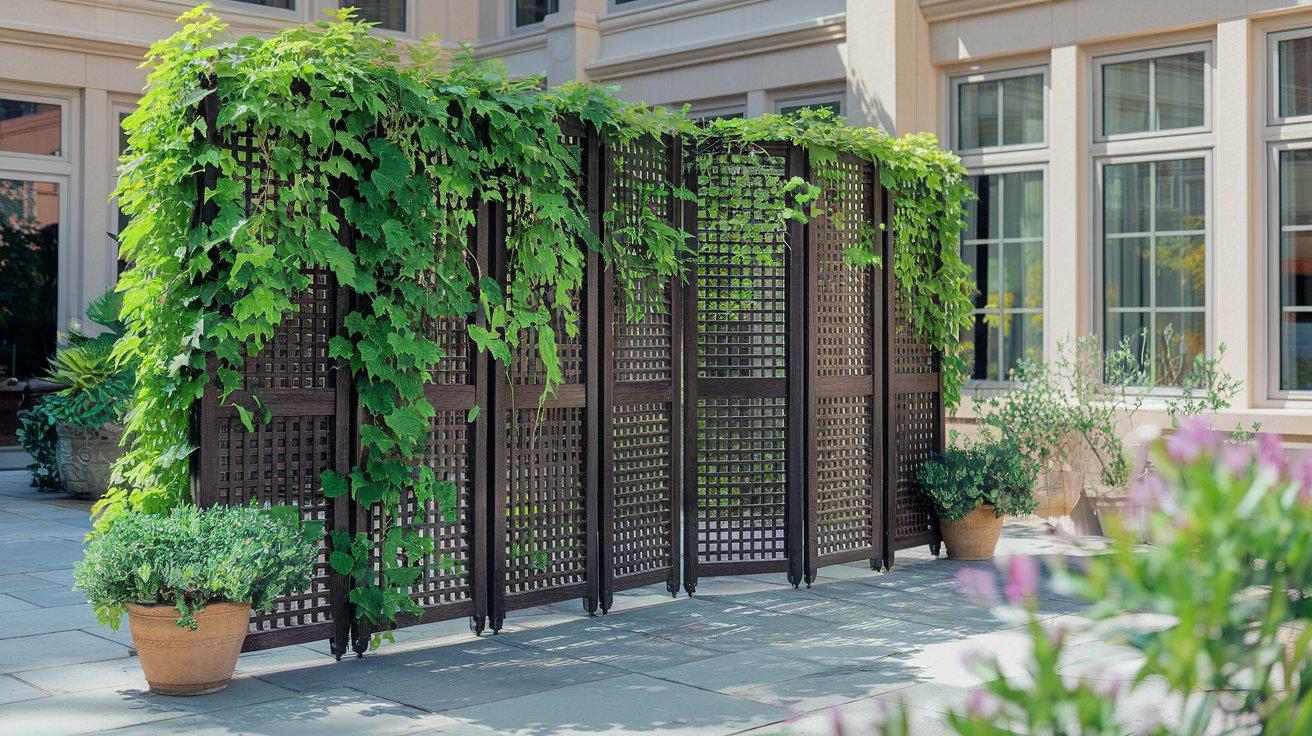
Freestanding screens with climbing vines create instant green privacy walls anywhere in your garden. Position these portable structures exactly where screening is needed most.
- Height: Typical screens stand 5-7 feet before vine growth.
- Best for: Flexible privacy needs or quickly screening specific areas.
- Maintenance: Train vines weekly during the growing season for coverage.
11. Gabion Stone-Filled Walls

Wire cages filled with stones create modern, industrial-style barriers with architectural appeal. They’re incredibly sturdy and require virtually no upkeep once properly constructed.
- Height: Build up to 6 feet without engineering requirements.
- Best for: Contemporary gardens or sloped terrain needing retaining walls.
- Maintenance: Virtually maintenance-free once properly installed and settled.
12. Rustic Recycled Shutter Panels
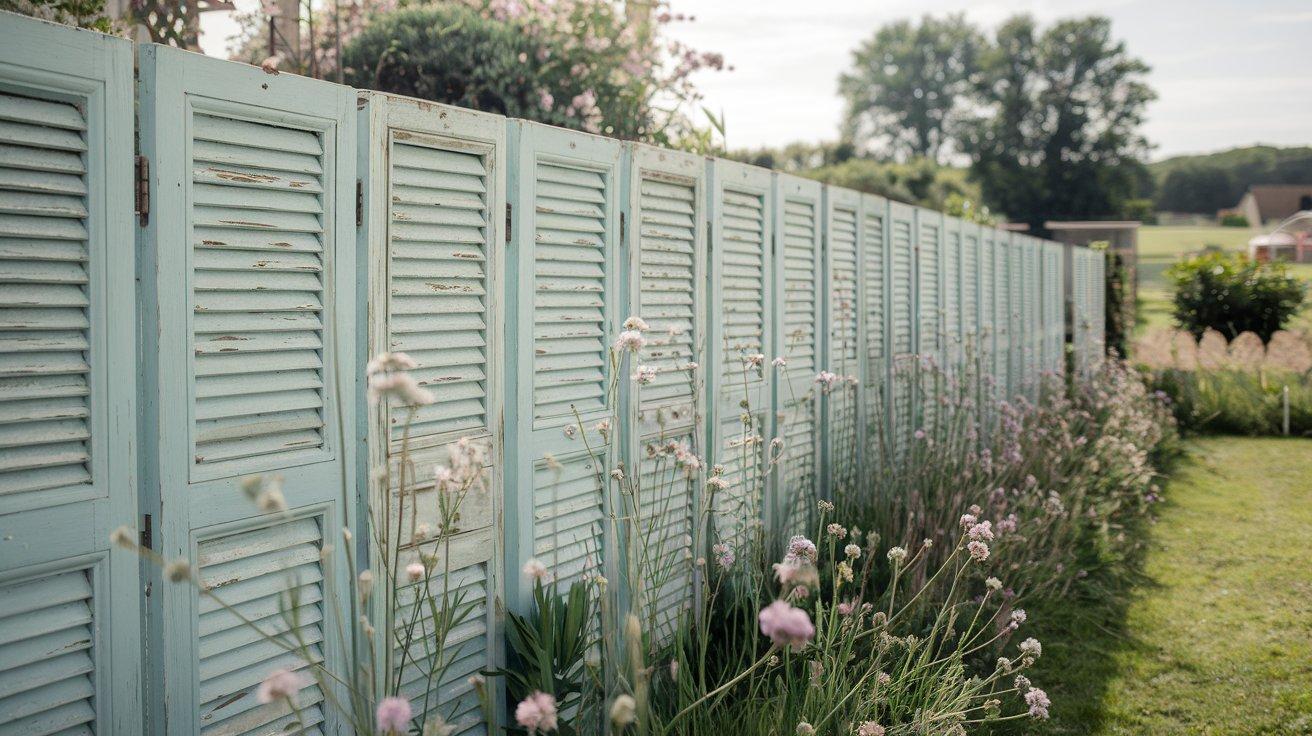
Old shutters lined up create charming privacy screens full of vintage character. Paint them in coordinating colors or leave them weathered for authentic shabby chic appeal.
- Height: Most shutters measure 4-6 feet, stack for more.
- Best for: Shabby chic or vintage-inspired garden overlooked by neighbours.
- Maintenance: Repaint or reseal as needed for protection.
13. Ivy-Covered Garden Archway

Archways draped in ivy form natural privacy tunnels, perfect for garden entrances. They create mysterious passages while blocking views from multiple angles effectively.
- Height: Standard archways reach 7-8 feet at the center point.
- Best for: Creating private zones within larger garden spaces.
- Maintenance: Trim ivy quarterly to control vigorous growth.
14. Tiered Planter Privacy Wall
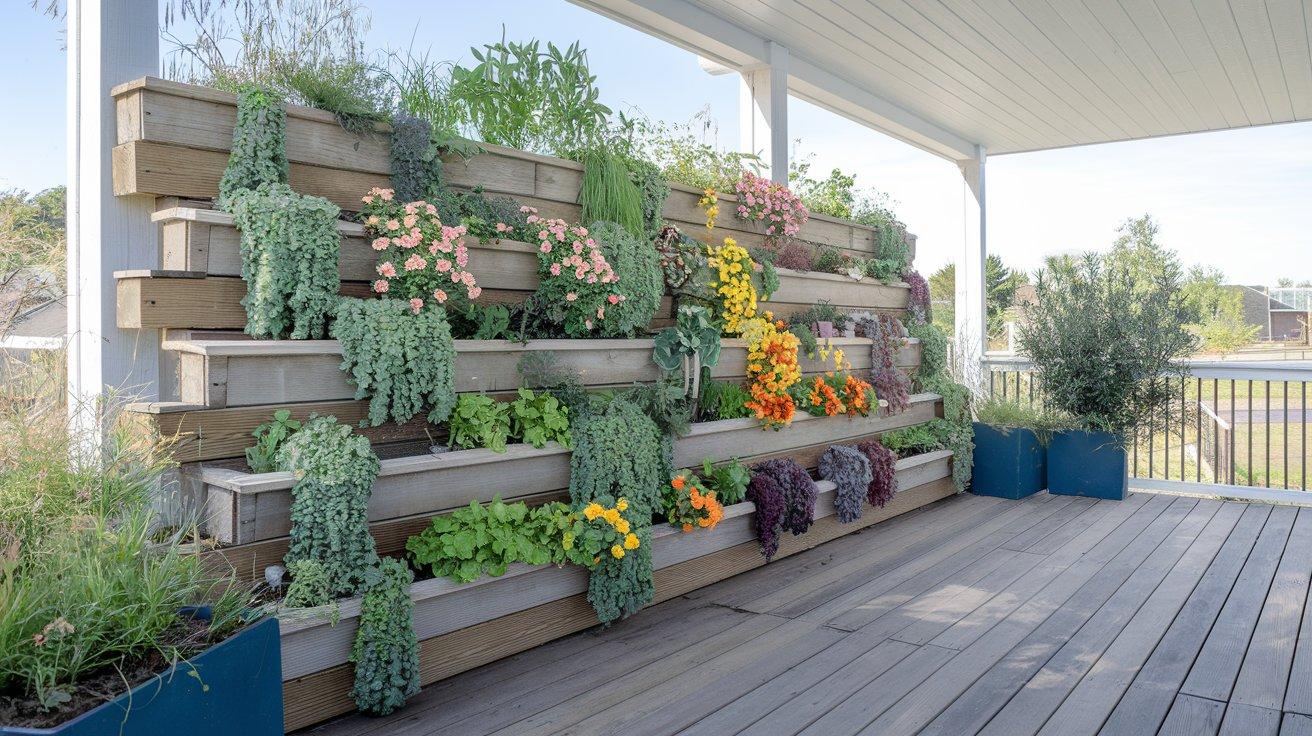
Stacked planters build vertical gardens that screen views while growing herbs or flowers. Fill with cascading plants for maximum coverage and continuous seasonal interest.
- Height: Stack planters 4-6 feet based on stability needs.
- Best for: Patios, decks, or areas needing portable solutions.
- Maintenance: Water each tier carefully to prevent overflow.
15. Artistic Metal Garden Panels
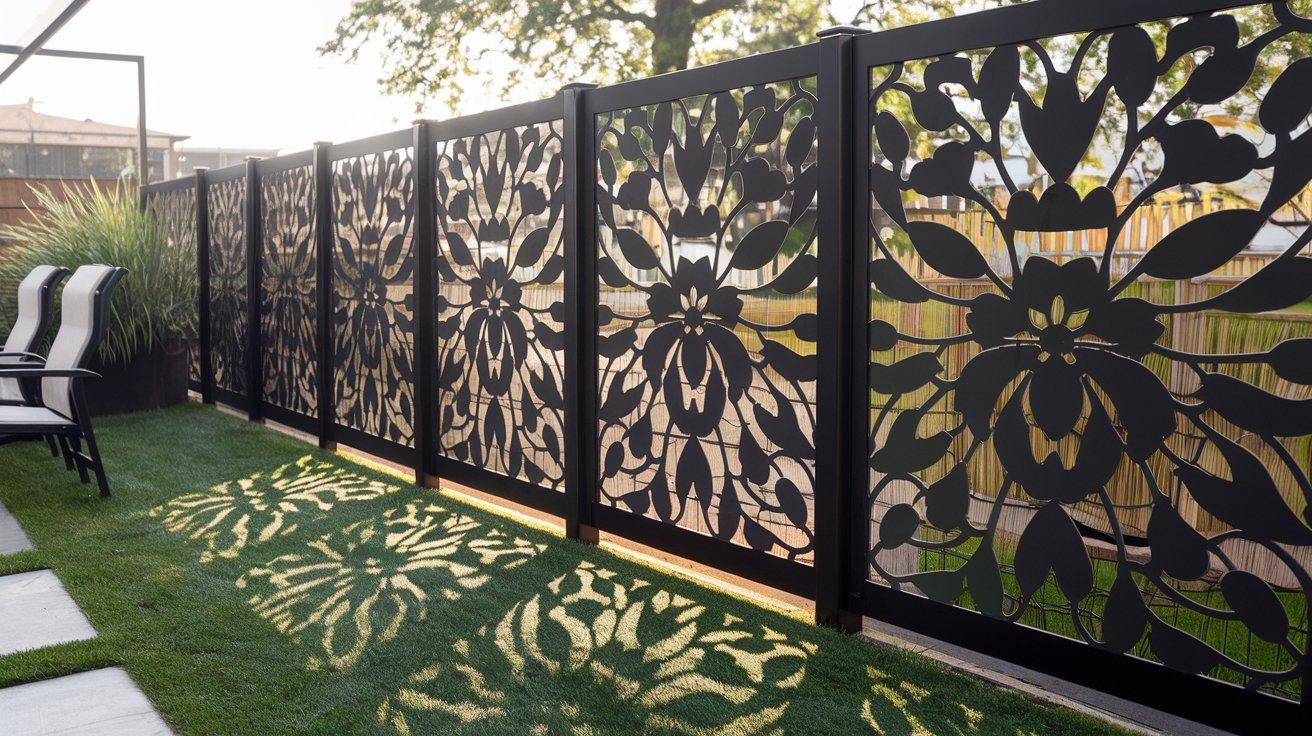
Laser-cut metal screens offer privacy through decorative patterns that cast beautiful shadows. They maintain an open feel while providing effective screening from neighbors.
- Height: Custom sizes available, typically 5-6 feet standard.
- Best for: Modern gardens wanting architectural interest and privacy.
- Maintenance: Occasional cleaning, rust treatment for untreated metals.
16. Hanging Vertical Plant Garden
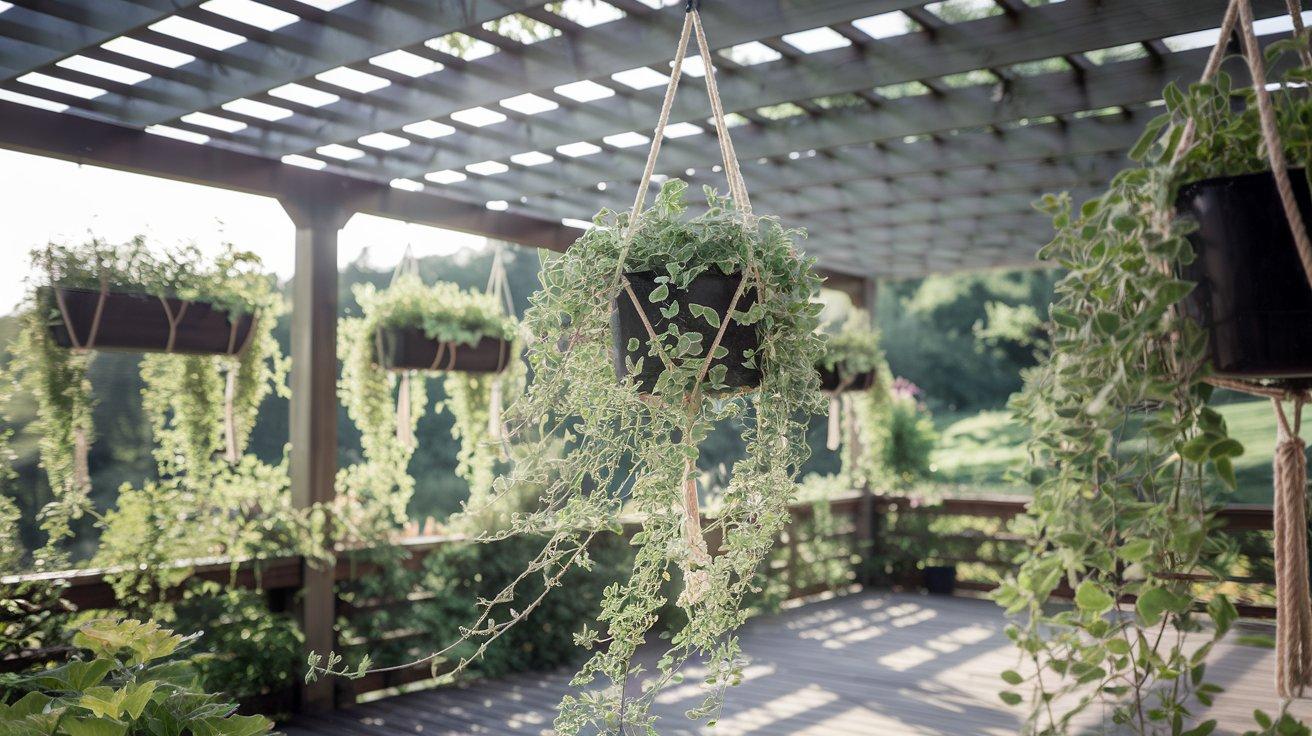
Suspended planters create living curtains using simple chain or rope systems. They’re perfect for pergolas, overhangs, or sturdy tree branches needing coverage.
- Height: Adjustable based on hanging points and plant selection.
- Best for: Adding privacy to covered outdoor living spaces.
- Maintenance: Regular watering is crucial due to faster drying.
17. Layered Shrub Borders
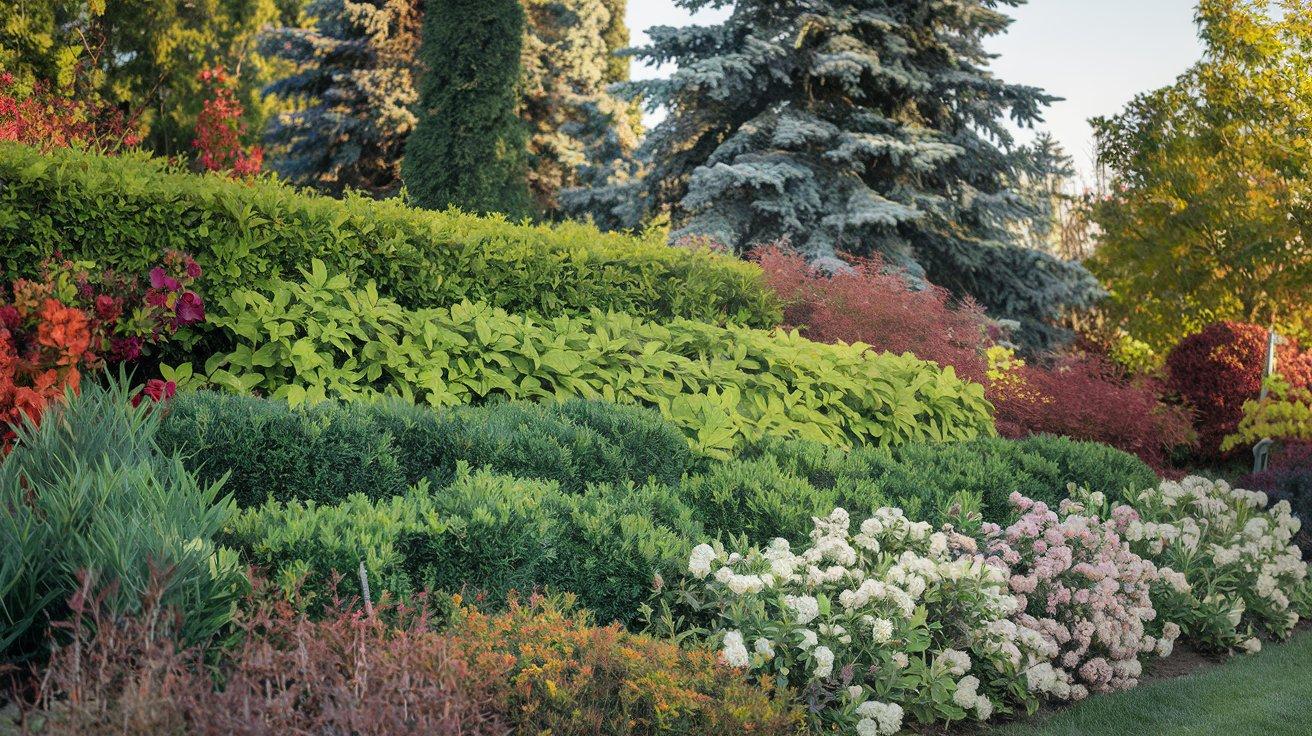
Mixed shrub plantings at varying heights create natural privacy through depth and density. Combine evergreen and flowering varieties for year-round screening with seasonal color changes.
- Height: Layer plants from 3 feet to 8 feet tall.
- Best for: Gardens wanting natural, wildlife-friendly privacy barriers that evolve.
- Maintenance: Prune individual shrubs based on their specific timing needs.
18. Mixed Textures Layered Screen
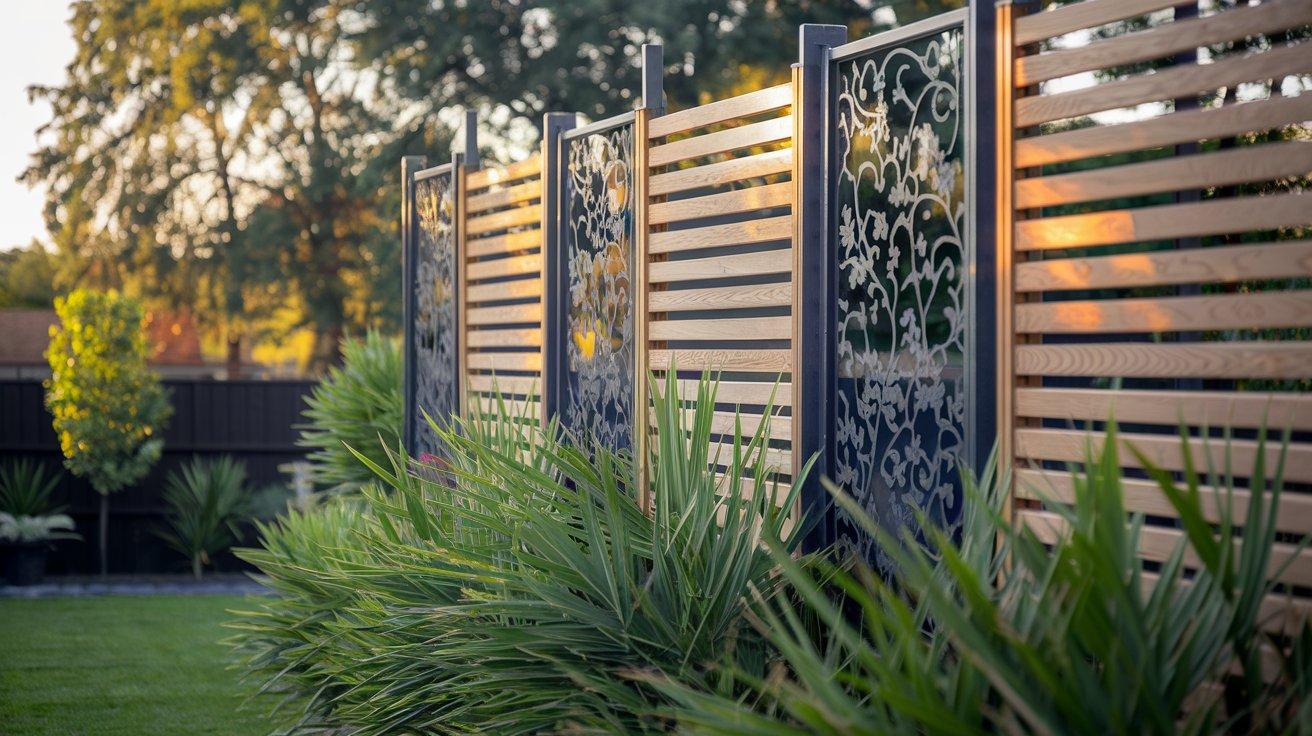
Blend hardscape elements with greenery for privacy that’s both functional and artistically layered. Layer different heights and textures for complete coverage with artistic flair.
- Height: Vary elements from 4-8 feet for best effect.
- Best for: Eclectic gardens wanting unique, personalized privacy solutions.
- Maintenance: Varies based on chosen materials and plants.
19. Willow Hurdle Fencing
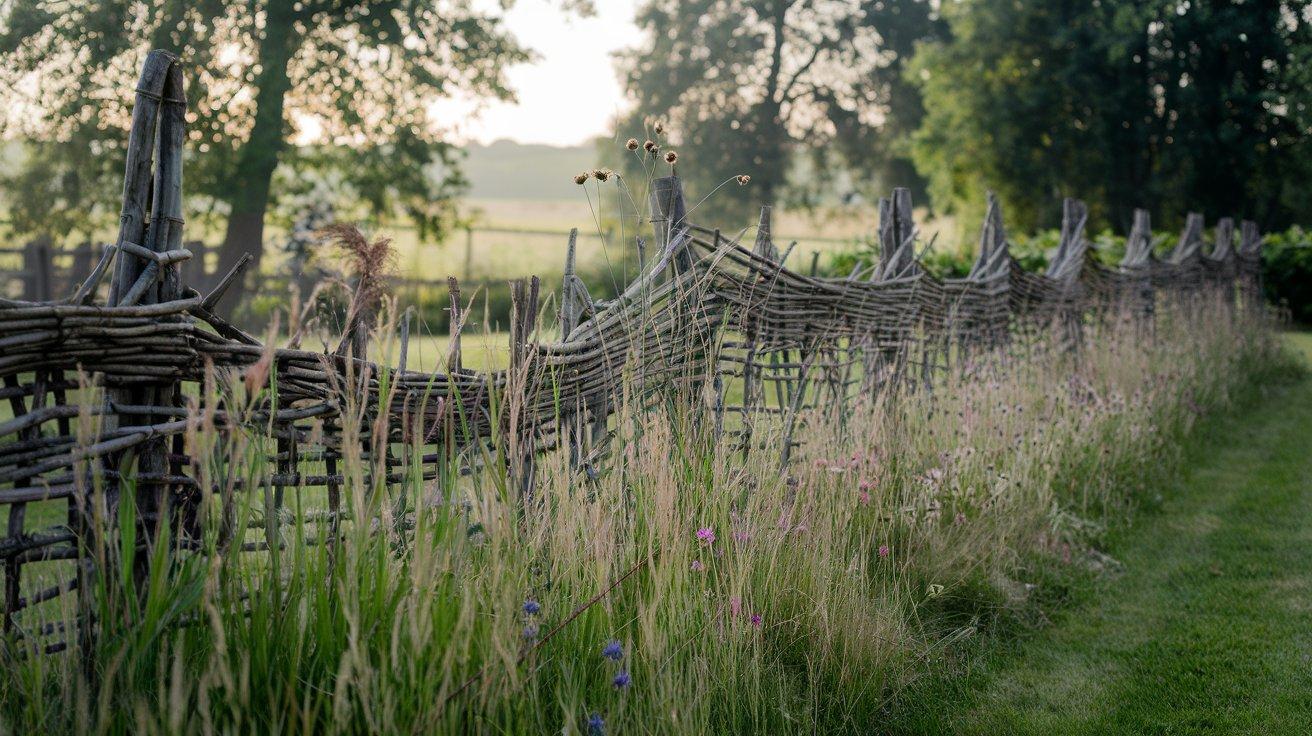
Woven willow panels provide natural, rustic privacy with authentic countryside charm. They’re biodegradable and blend perfectly with cottage garden plantings.
- Height: Standard panels commonly come in 6-foot heights.
- Best for: Cottage gardens or natural, wildlife-friendly spaces.
- Maintenance: Replace panels every 7-10 years as needed.
Tips to Prevent Privacy Loss Over Time
Privacy solutions require ongoing care to remain effective across changing seasons and years. These preventive measures ensure your garden remains a private sanctuary over time.
- Check plant health monthly during the growing season for disease or pest issues.
- Replace dead sections immediately to prevent gaps from forming in your privacy screen.
- Schedule annual maintenance tasks like trimming, staining, or tightening loose fixtures properly.
- Plant backup specimens nearby to fill spaces when mature plants eventually decline.
- Monitor neighboring developments that might affect your existing privacy solutions over time.
- Choose durable materials and proven plant varieties known for longevity in your climate.
Final Thoughts
Creating a private garden space doesn’t require sacrificing style or breaking the bank. With different options to choose from, you can mix and match solutions that fit your specific situation.
Some gardens benefit from quick fixes like curtains or screens, while others thrive with patient investment in natural barriers.
The key is starting somewhere and adjusting as you learn what works best for your space. Every garden tells its own story through the privacy choices made.
Your outdoor sanctuary awaits, whether you prefer living walls, artistic panels, or classic hedges.
Which privacy solution caught your attention? I’d love to hear about your experiences or drop any questions you have in the comments below.
Frequently Asked Questions
What Is the Cheapest Way to Screen a Garden?
Climbing plants like ivy, clematis, or jasmine offer affordable coverage. They grow quickly on basic supports and create lush, natural privacy screens.
How to Disguise a Garden Wall on A Budget?
Painting provides the most economical wall cover option. For damaged walls, consider rendering first or choose alternative screening like fabric or plants.
Is Bamboo Screening Any Good?
Bamboo screens offer strong, weather-resistant privacy solutions. They come in convenient rolls for quick installation and last many years outdoors.
